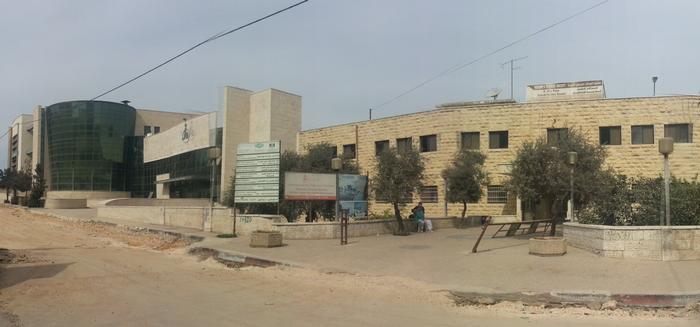Faiq Mari - ProposalA Resilient Past and a Promising Future; Disability in RamallahI was at a local hospital when I met him; a lively paramedic busy handing patients medical reports. As I approached the desk to pick up my papers, I noticed his wheelchair and wondered: “what story might he have?” For where I come from, people like Ihab often have a story to tell. I came across Ihab again in the elevator. It was Eid al-Fiter, and his 3-year-old daughter could not wait much longer for a walk in the Souq . An innocent remark from the little girl started a conversation, and as we made our way to the Souq Ihab told me his story. He was shot during the first Intifada and left paralyzed below the waist. It was a hard time for him, he described; anger and sadness, mixed with an injured pride, consumed the young activist as he lay in bed for several painful months. Ihab was not alone in his pain; during the first Intifada, the occupation left about twenty thousand Palestinians injured and three thousand permanently disabled. This had a drastic effect on Palestinian society. The newly disabled, like Ihab, were shocked by the reality they had to face and assumed responsibility to build awareness concerning disability in their communities. Society endorsed their efforts, and with help from international organizations, community-based-rehabilitation thrived. It was a bright chapter for Palestinians; the collaborative efforts of the community defied all constraints and culminated in projects such as Abu-Raya Rehabilitation center in Ramallah, the establishment which marked a turning point in the life of Ihab and many others. By 1999, the Engineering Association proposed a code for inclusive design standards and the Palestinian Authority issued a legislation endorsing it. Recently, local authorities in cities like my hometown, Ramallah, adopted the code and started enforcing the legislation in public buildings and urban spaces. While these accomplishments constitute steps in the right direction, the current reality still needs improvement. This fact struck me most during my internship in Japan. Experiencing inclusive design opened my eyes to the numerous possibilities for improving my city. I remembered Ihab, and thought of my grandmother whom up until then did not occur to me as someone in need of such design. As Palestinians, we have a long way to go for our public realm to become a platform for diversity, inclusion and empowerment. The disabled still struggle to be fully active members of society, and the redefinition of disability as a contextual experience highlights to us, designers, our great responsibility in changing this reality. It is our duty to implement universal design and seek that it ultimately becomes a basic notion in society’s scheme of thought. I propose to further explore my city, Ramallah, through the eyes of the disabled like Ihab, and to provide architectural evaluation and recommendations based on their perspective. I hope to draw from the past Palestinian experience of resilience, and impel my community to join forces towards a society where people of all physical abilities can flourish. Additional Help and InformationAre you in need of assistance? Please email info@berkeleyprize.org. |
|

